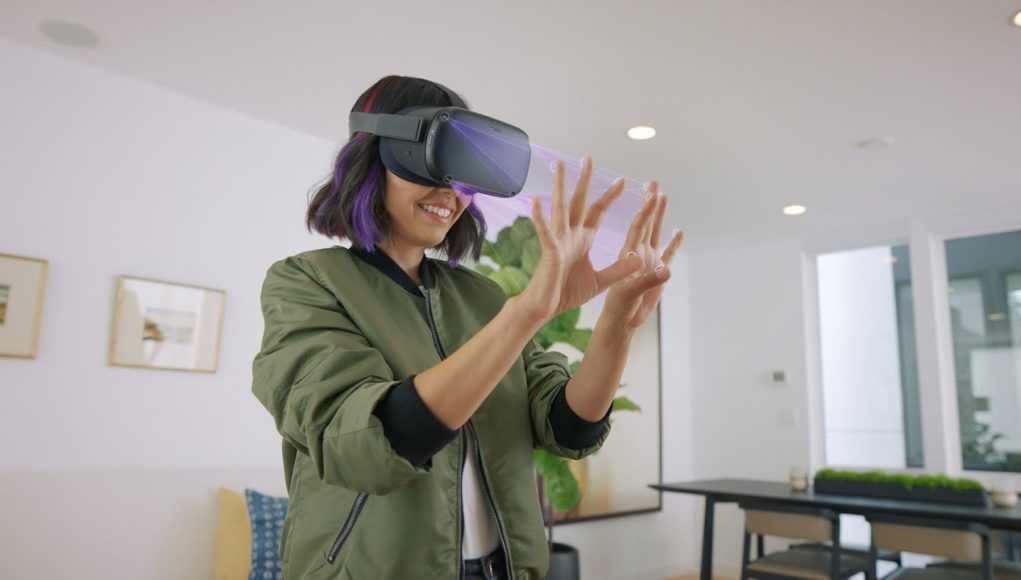Oculus rolled out hand-tracking on Oculus Quest last week as an experimental feature, but the company says it’s waiting on feedback before it commits to bringing the capability to its latest PC headset, the Rift S.
Though the company has assured its PC VR users on several occasions that they remain a top priority, the bulk of Facebook’s attention lately seems to be on its standalone headset, Oculus Quest. Since its launch earlier this year, the device been improving with regular software updates, like improved passthrough capabilities and Oculus Link which turns Quest into a PC VR headset too.
And now Oculus has rolled out controller-free hand-tracking as an experimental feature on Quest. Though early, it’s a rather significant new capability—opening up new and improved use-cases for VR apps which could be more natural or convenient to control without picking up controllers—and one which Oculus seems keen to bring to full release.
Considering the importance of this new input capability, it’s somewhat surprising that Oculus not only didn’t bring the same feature to Rift S at the same time, but the company isn’t even ready to commit to doing so eventually.
“We started [hand-tracking] with the Quest platform first and we’re going to listen to the feedback from Quest as we roll out this feature, and will evaluate the technical challenges of bringing it to other devices [like Rift S],” an Oculus spokesperson tells Road to VR.
If Oculus only had the resources to build hand-tracking for one of its headsets at a time, starting with Quest makes sense; its focus on ease-of-use and extremely quick ‘time to play’ makes it better suited than Rift S for casual applications (like media viewing, web browsing, and social VR) and it’s those casual applications which hand-tracking is best suited for.
Still, as the company appeared to finally be moving toward a more cohesive ecosystem, it’s strange to see that Oculus isn’t signaling a clear desire to maintain ‘input-parity’ between its latest headsets; though games still need to be heavily optimized to run on Quest’s low-end hardware, it’s the first untethered headset from Oculus to support the same 6DOF tracking as its PC counterpart, meaning it can play the same kind of high-end VR games which require advanced tracking—a boon for developers trying to find success in a fragmented space.
With handtracking on Quest but not Rift S, developers are right back to juggling very different input modalities (a cumbersome design challenge), or biting the bullet and putting all of their eggs in the Quest basket (if they seek to build an app uniquely suited to hand-tracking).
At least as far as what users are asking for, there seems to be real demand for hand-tracking on Rift S too. According to the official Oculus Rift S feedback page, “Optical handtracking for Rift S” is the leading suggestion with more than 1,700 user votes. Submitted at the end of September, back when Quest hand-tracking was first revealed, the suggestion reads:
‘Please make sure that—alongside Quest—Rift S will also get optical hand tracking. Parity between the headsets should be a high priority. Currently there’s no clear commitment either way and Rift S users shouldn’t be left out if there’s not a serious, technical reason.
Hopefully Rift S will eventually get the same hand-tracking feature, thereby broadening the addressable market of developers who want to focus on VR apps designed around hand-tracking.
Unfortunately there’s an additional wrinkle to consider: hand-tracking would not likely come to Oculus’ first-generation Rift CV1 because it uses older, external sensors which would likely be more challenging for hand-tracking (both Quest and Rift S use on-board sensors for tracking). Though the Rift CV1 has been discontinued and will one day be phased out entirely, developers hoping to create hand-tracking applications for Quest and Rift S would need to consider how many Rift CV1 users wouldn’t be included; Oculus too would need to adapt its store to tell Rift CV1 users that their headset isn’t compatible with apps that require hand-tracking.







